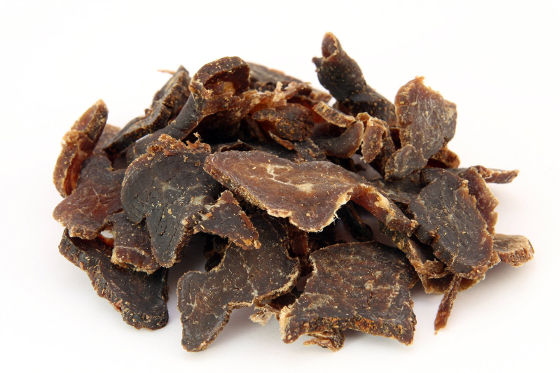Meat and poultry are valuable sources of animal protein. Unfortunately, consumers are sometimes led to believe that these essential protein sources are packed with unhealthy fats and high amounts of cholesterol. In some cases, this is true; however, grass-fed, pasture-raised meats can provide essential nutrients without all the chemicals and hormones and tend to be much lower in fat compared to grain-fed, commercially raised animals. You can live a healthy lifestyle without giving up meat — read on to learn about some popular protein-based diets, snack preparation, and where to purchase grass-fed products.
Atkins vs. Paleo
Atkins originated in the 1970s when “Dr. Atkins Diet Revolution” hit bookstore shelves. Paleo, or the caveman diet, stresses the consumption of natural meats and ingredients just as our ancestors did and calls for a diet free of sugars and processed foods. Both the Atkins and paleo diets require dieters to cut out foods that are high in sugary carbs and other foods with low nutrients. And both diets both promote protein and whole foods consumption. However, the paleo diet limits more foods than the Atkins diet, including dairy products, potatoes, salt, refined oils, cereal grains and legumes, in addition to processed foods and refined sugars that the Atkins diet excludes as well.
Many paleo experts see Atkins as a diet for weight loss and paleo as a diet for life-long health. Unlike Atkins, paleo diets do not include low-carb processed foods; rather, paleo diets focus on the consumption of whole foods. Atkins boats a long-list of commercially processed snacks and meals that are advertised under the Atkins Nutritionals brand. Some of the items include packaged foods like the Atkins Indulge Chocolate Caramel Mousse Bar, which is certainly not a health food despite being low-carb.
Health professionals are concerned that the Atkins diet can pose a serious risk to a person’s health, including nutritional deficiencies, premature aging, cataracts, cancer and heart disease. Diets like paleo that shun dairy and grains lack many essential nutrients; however, by eating a balanced diet with animal proteins, leafy greens and other essential nutrients you can live a healthy, sustainable lifestyle and maintain your weight, too.
Store-Bought vs. Made-at-Home Snacks
Picking up a bag of jerky snacks on the go is convenient, but you may actually be getting more in that bag than you bargained for. Store-bought jerky is packed with heavy amounts of salt, sugar, preservatives, propylene glycol and sodium nitrate. That's why it can last for up to a year; fresh, homemade jerky only lasts from one to two months. Homemade jerky has fewer calories than store-bought types, with just 43 calories compared to commercially produced jerky’s 80.

Not only is homemade jerky better for you, it's cheaper, too. Although it takes much longer to prepare, 30 minutes to cut and cure plus 18 hours in the refrigerator, it costs just $5.32 to make 10 ounces of homemade jerky while 12 ounces of store-bought jerky costs $9.99, according to DIY Buy.
Make a healthier choice and prepare your own batch of homemade jerky with a food dehydrator. By making your snacks at home, you control what goes into your food and how it’s prepared. Meats including beef, venison, fish and fowl are all good options for homemade jerky. Pick up a jerky cookbook at an retailer like Cabela’s or try the beef jerky recipe at Whole Lifestyle Nutrition.
Where to Buy Fresh, Grass-Fed Meats
Locating healthy, lean meats is easy, but you may have to travel a bit father than the corner grocery store. Use Eat Wild’s directory of more than 1,400 farms across the U.S. to locate a pasture-based farm that produces grass-fed meat near you. Eat Wild includes farms that raise elk, beef, pork, lamb veal, venison, yak, chicken, duck, turkey and more. And many of the farms listed in the directory meet organic label standards. If you’re unable to locate a farm in your area, many of the farms can ship their products directly to you. Or stop by a Whole Foods Market to pick up grass-fed meats. The Austin-based natural foods retailer has locations in 42 states.
